This Post May Contain Affiliate Links. Please Read Our Disclosure Policy.
This soy sauce substitute recipe tastes so much like regular soy sauce, but it’s soy-free, Whole30 compliant, paleo, and gluten free! It’s salty and rich and has a delicious flavor, just like regular soy sauce, all thanks to a secret ingredient. This soy sauce substitute is made in about 2 minutes with only 3 ingredients and lasts for such a long time in the fridge.
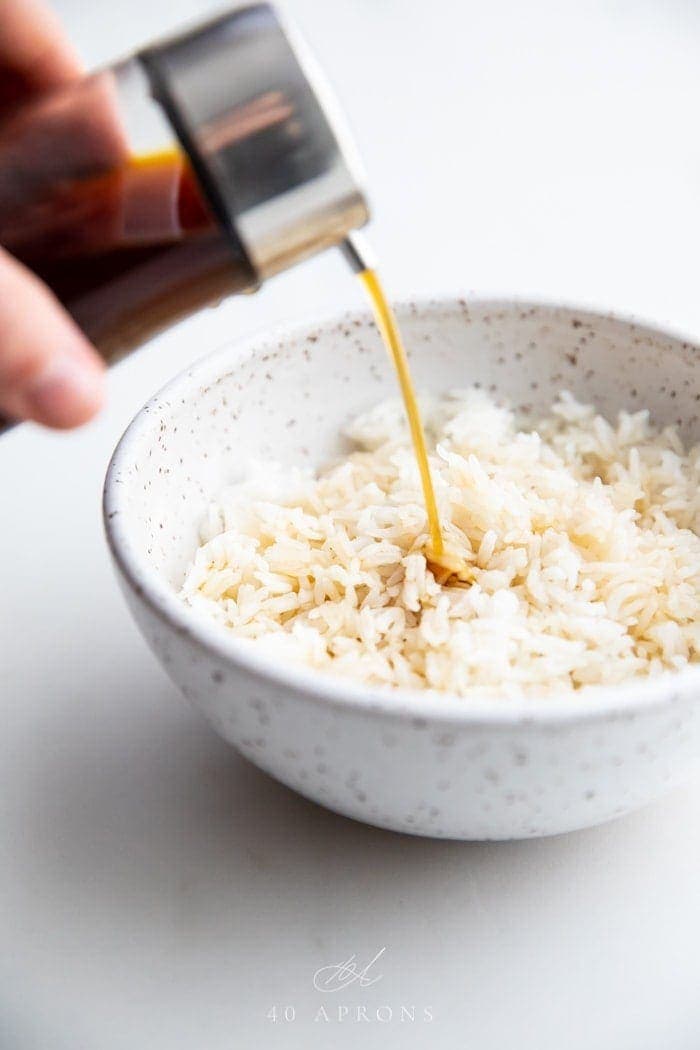
Soy sauce is a magical ingredient: full of umami, saltiness, and a richness that comes from long-fermented soybeans. Not only that, it’s a major staple in so many Asian cuisines and used in millions of recipes to add savoriness!
So, uh, good for you, soy sauce. But what if you can’t eat it?
Whether you’re allergic to soy, allergic to wheat (which is commonly found in soy sauce), are on a paleo diet, or are on a Whole30, there are plenty of reasons why you’d need a quick and easy soy-free substitute for soy sauce.
So, what’s a good healthy soy sauce substitute?
Coconut Aminos
When you’re paleo or on a Whole30, you’ll regularly hear coconut aminos referred to as a great soy sauce substitute. I took that advice at face value on my first round, in fact, and made a quick salad dressing I’d made dozens of times before: soy sauce + olive oil.
I simply replaced the soy sauce with coconut aminos and coated my salad in the stuff. I nearly gagged, it was so sweet and not salty at all! I gave up the coconut aminos for a while, until I realized they are perfect for darkening sauces and gravies and adding a gorgeous natural sweetness to Whole30 recipes.
I use coconut aminos in so many of my recipes, like my Whole30 Ketchup, Egg Roll in a Bowl, and Healthy Lettuce Wraps! But when it comes to a soy sauce substitute, it’s just not enough.

Fish Sauce
Much closer to the saltiness and umami of soy sauce, fish sauce is another Asian condiment regularly recommended as a soy sauce substitute. The problem is that fish sauce has a pungent flavor and smell when used in most quantities.
Don’t get me wrong: I absolutely adore fish sauce. But when it comes to a healthy soy sauce substitute? It just isn’t enough… or is it too much? Where’s that thinking face emoji…
If you replace soy sauce with fish sauce, you’re going to find yourself super overwhelmed with that fishy taste! The fermented flavor in soy sauce comes from, yup, soybeans, which are much subtler and softer.
Fish sauce is fantastic when you need a powerful saltiness, and it’s perfect in Thai recipes, like my Best Ever Tom Kha Soup Recipe. But we need something a little different for a healthy soy sauce substitute!
What Inspired This Recipe
It occurred to me, though, that we could borrow the best parts of a few ingredients to create a fab soy sauce substitute.
- We use coconut aminos for the depth and flavor, but not too much, lest we end up with a sugary sauce!
- Fish sauce provides a rich umami flavor and the saltiness we all love from soy sauce.
But how do we get that fermented vegetable flavor and cut down on the intensity from the fish sauce? Are you ready?
The Secret Ingredient …
Fact: secret ingredients are the most fun. And do I have a weird one for you in this Whole30 soy sauce substitute recipe! You ready?
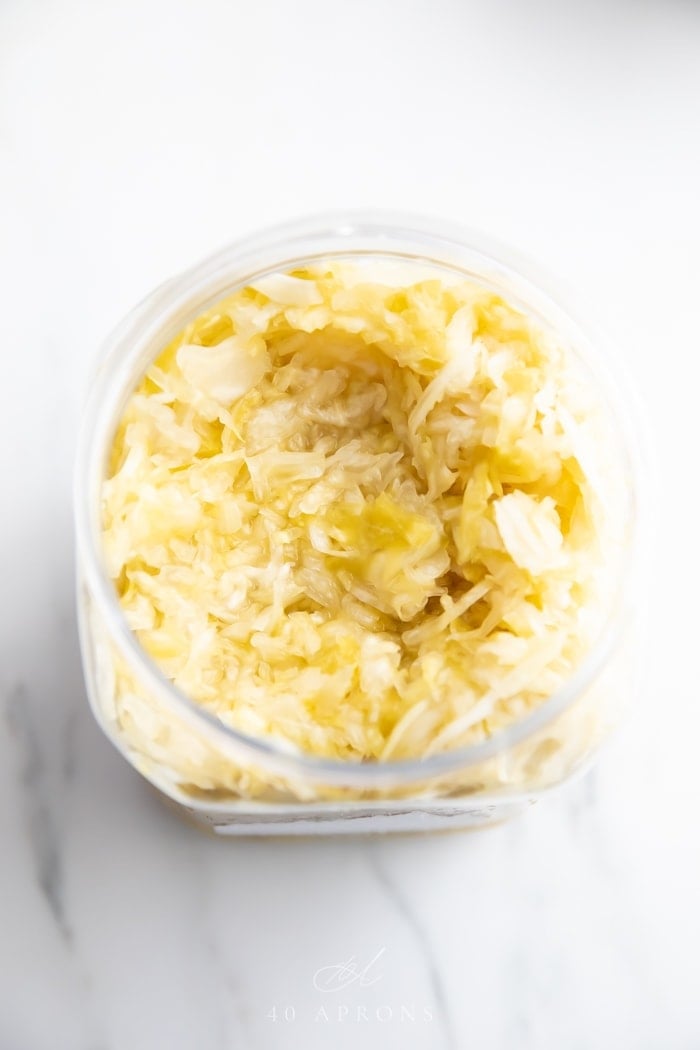
Sauerkraut juice.
Yep… sauerkraut juice. The juice of a sauerkraut. Er, from a container of sauerkraut. And what exactly does that do?
The sauerkraut juice cuts the intensity of the fish sauce, while also lightening the heaviness and sweetness from the coconut aminos. Not only that, it provides that umami-rich fermented vegetable flavor that you get from soy sauce (Hello, fermented soybeans!) but miss from all other variations.
It seriously makes all the difference.
Since the sauerkraut juice is such a major factor in this recipe, you’ll want to make sure you’re using high-quality stuff and that your sauerkraut is plain. If you use some funky flavored sauerkraut, I can almost guarantee you’re not going to like the results! So focus on fresh sauerkraut, usually found in the refrigerated section, and a plain variety.
Why You’ll Love This Recipe
Because this soy sauce substitute contains no Worcestershire sauce, beef broth, or molasses, it’s
- Healthier than other soy sauce substitute recipes
- Whole30 compliant and paleo
- Free of added sugars
- Super quick and easy to make.
If you are on a Whole30, you’ll need to make sure you use Red Boat Fish Sauce, which is the only Whole30-compliant fish sauce I know of. It has no added sugars, which is the non-compliant culprit in most other fish sauces.
How to Make It
It’s insanely easy! You’ll just need three ingredients:
- Fish sauce
- Coconut aminos
- Sauerkraut
Then, you simply mix the portions of each ingredient together in a medium bowl. Sieve the mixture to keep out any sauerkraut pieces, and store in a jar or bottle. That’s it!
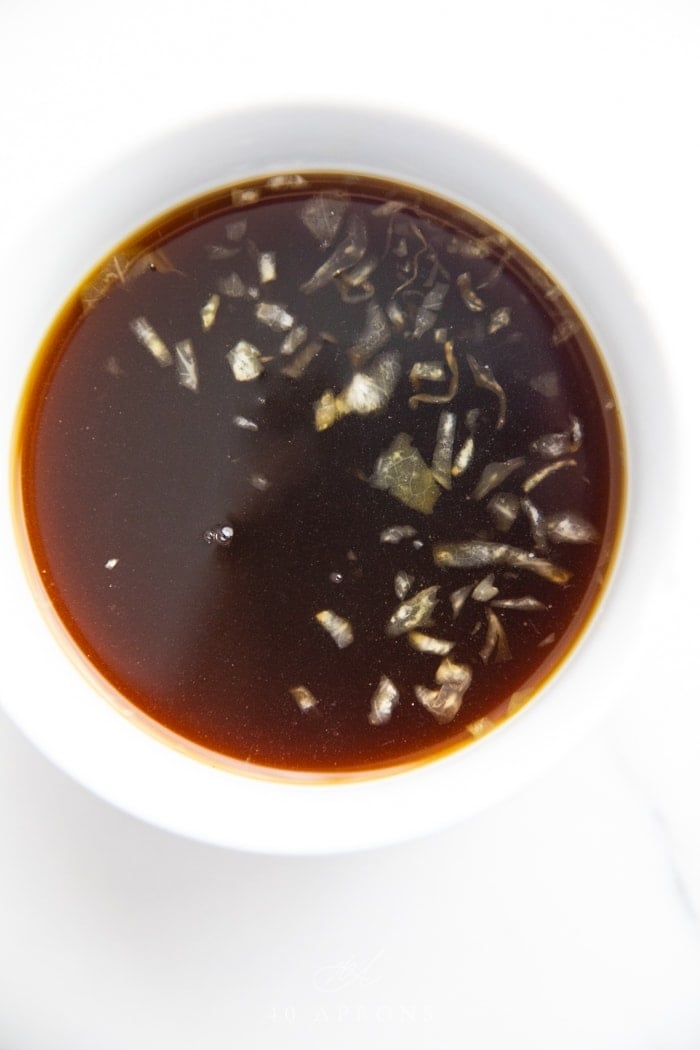
No heating, no whisking, no cooling, nada. Just mix and go.
Can I substitute [ingredient]?
I can’t know for sure, since every single ingredient in this soy sauce substitute recipe plays a major role. Try not to substitute anything, but if you do, I cannot guarantee how it will turn out.
How long does this soy sauce substitute recipe last?
This recipe will keep in the fridge for at least two weeks.
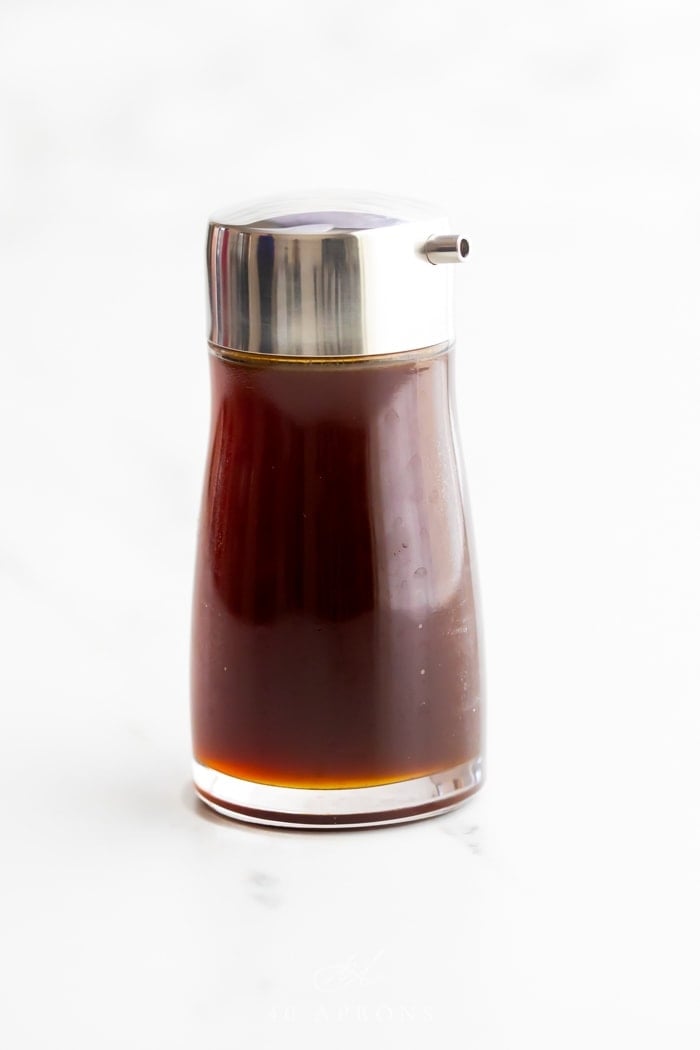
Other recipes you’ll love:
- Egg Roll in a Bowl with Creamy Red Chile Sauce
- Whole30 Ketchup
- Whole30 Sriracha
- Whole30 Dump Ranch Recipe
- Whole30 BBQ Sauce With Chipotle (Paleo, Vegan)
Hey – you’ve made it this far, and now we’re best friends! If you make this recipe, I’d love for you to give it a star rating ★ below. Make sure you follow me on Instagram, Pinterest, and Facebook, too!
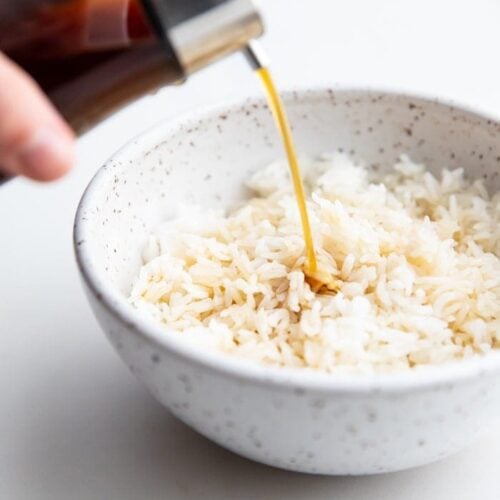
Easy Soy Sauce Substitute (Whole30, Paleo)
Ingredients
- ¼ cup fish sauce see Note 1 for Whole30
- 2 tablespoons coconut aminos plus more as desired, see Note 2
- ¼ cup plus 2 tablespoons plain sauerkraut juice see Note 3
Instructions
- Combine all ingredients in a bowl. Strain into a jar or bottle and refrigerate. Keeps in the fridge at least 2 weeks.
Approximate Information for One Serving
Nutrition Disclaimers
Number of total servings shown is approximate. Actual number of servings will depend on your preferred portion sizes.
Nutritional values shown are general guidelines and reflect information for 1 serving using the ingredients listed, not including any optional ingredients. Actual macros may vary slightly depending on specific brands and types of ingredients used.
To determine the weight of one serving, prepare the recipe as instructed. Weigh the finished recipe, then divide the weight of the finished recipe (not including the weight of the container the food is in) by the desired number of servings. Result will be the weight of one serving.
Did You Make This Recipe?
Tag @40aprons on Instagram and be sure to leave a review on the blog post!
Never Miss A Meal!
New Recipes Straight To Your Inbox
A curated selection of our most recent recipes, delivered straight to your inbox once a week.
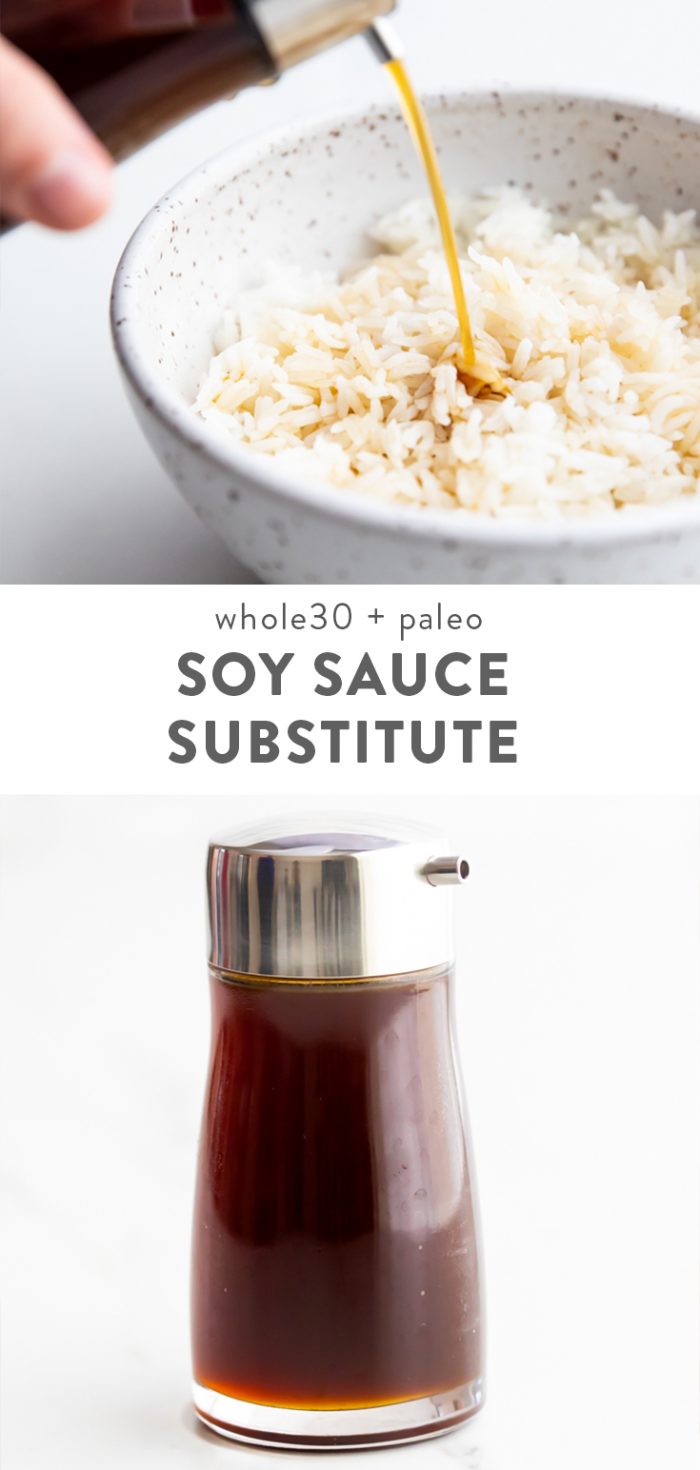




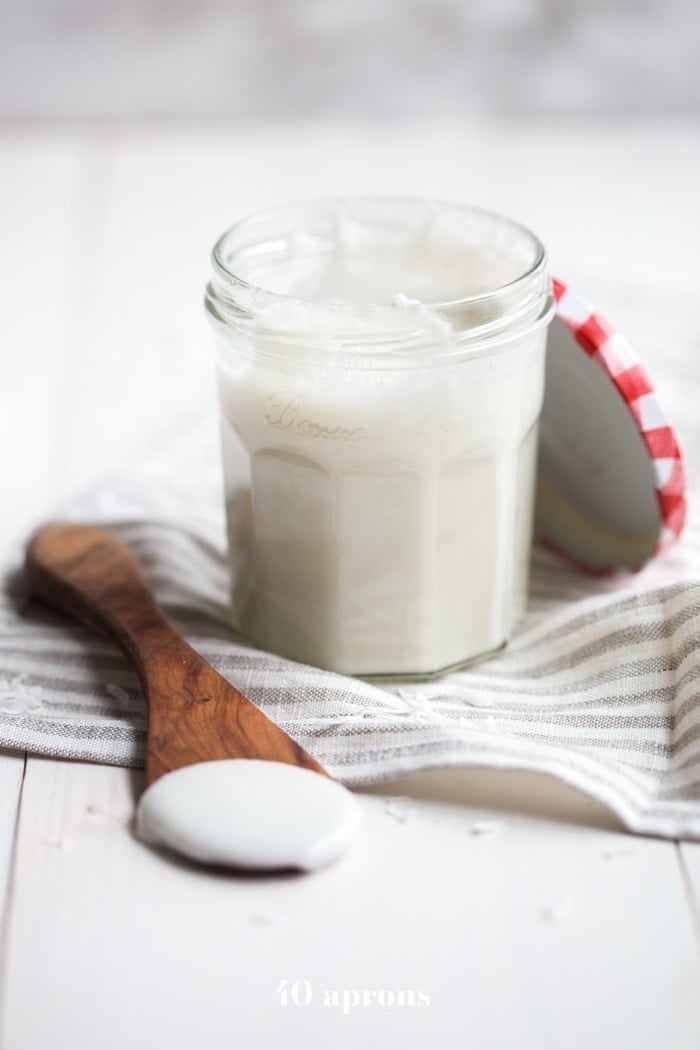
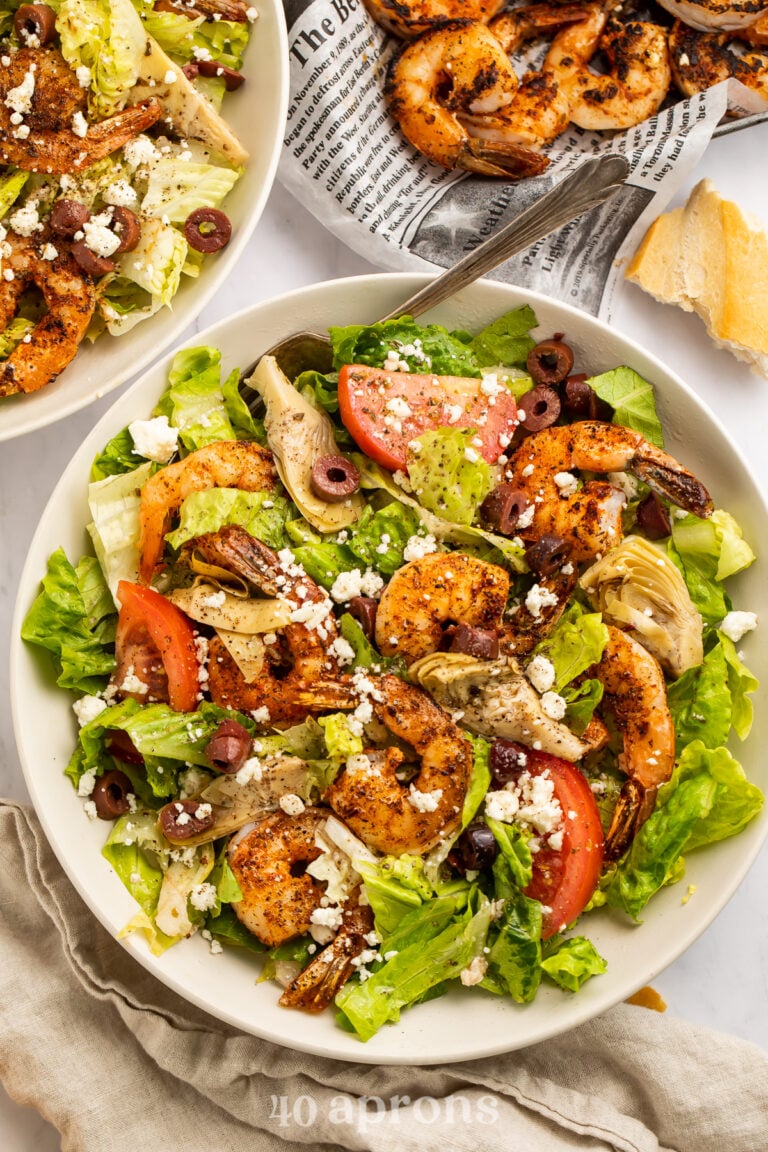










One of the perfect and informative site ever. Bookmarked for future read.
substitute for coconut aminos
one of the best blog ever .bookedmarked for the future read
Glad you like it!
PERFECTION.
GAME CHANGER
LIFE ALTERING.
Appreciate such extremely positive comments, Thomas!
This is genius, my friend! I need to try it ASAP.